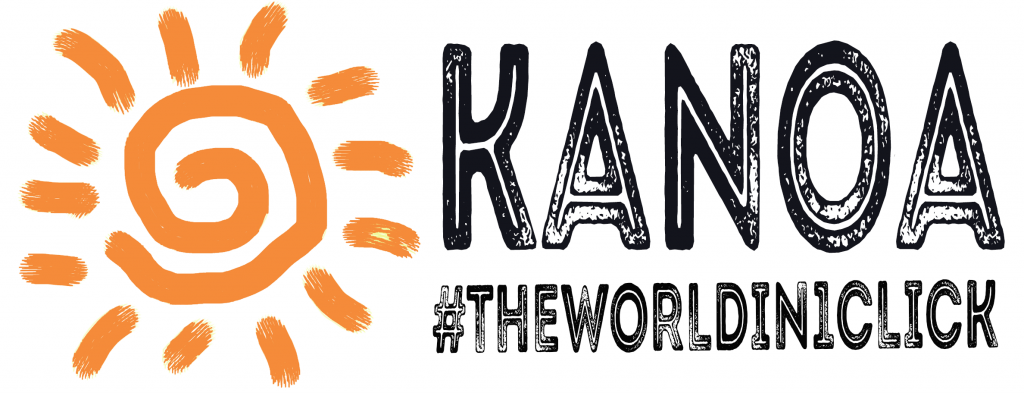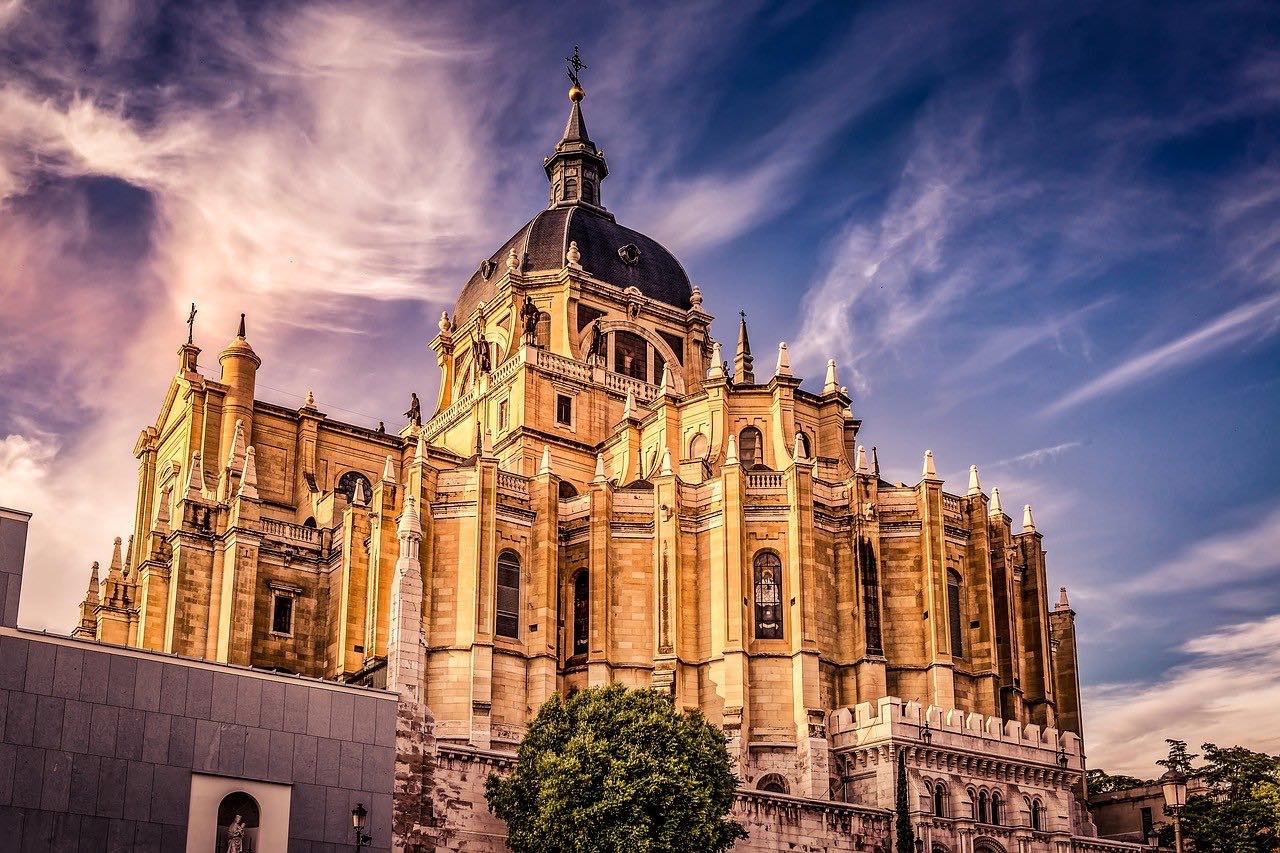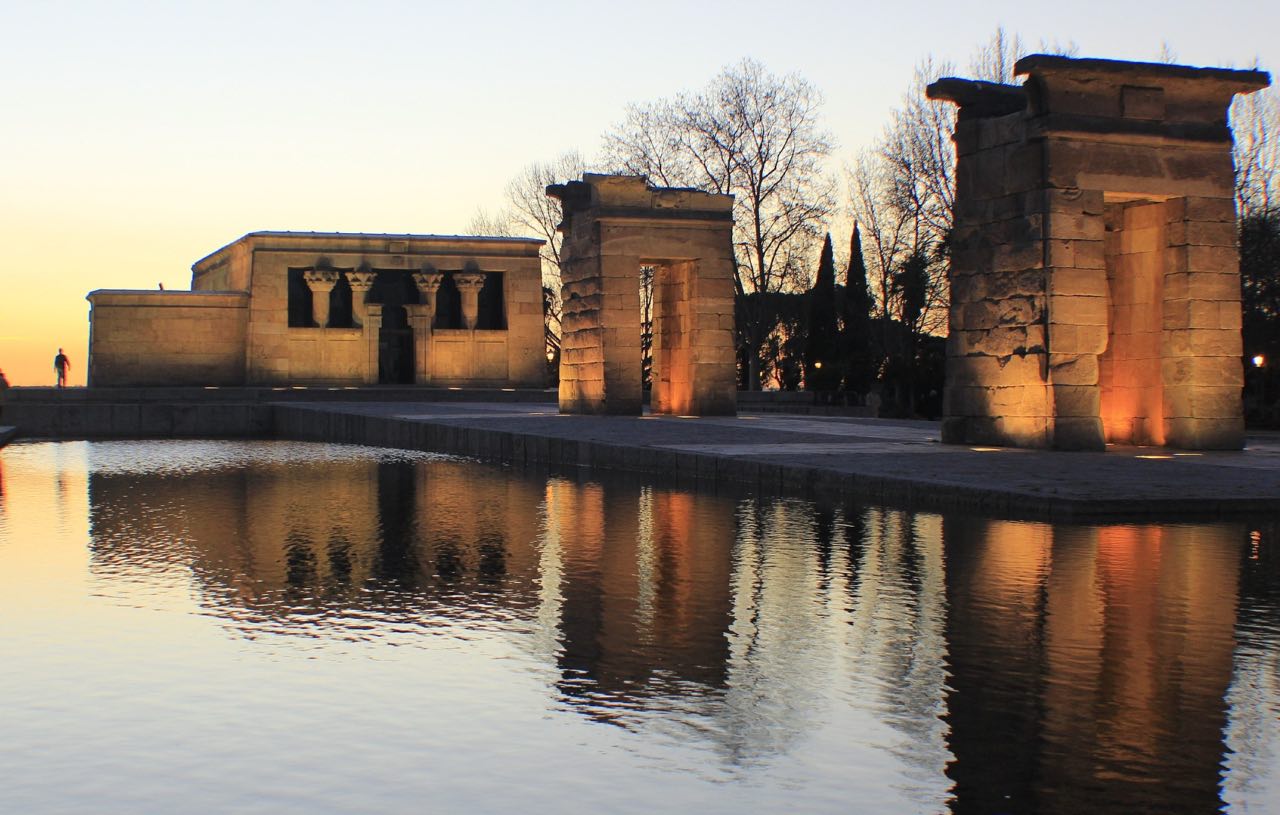The Prado, Reina Sofia are just some of the main museums not to be missed in a weekend in Madrid. Here are all the other attractions, squares and monuments not to be missed during your holiday. Be it short or long.
WEEKEND IN MADRID
MUSEUMS
The Prado can only be the starting point for your Weekend in Madrid. It is still the most important museum in all of Spain, and one of the landmarks in all of Europe. The capital also boasts a top-notch offer that can satisfy the tastes of all visitors.
From this link, all the info on the main museums of Madrid.
ROYAL PALACE
The Palacio Real, is the residence of the Spanish kings, and the place where official events and state ceremonies take place. It was built in the place where the Alcazar once stood, destroyed by a fire, at the behest of Philip V. The French influence and taste is evident; the Palacio Real was inspired by the Louvre in Paris. Inside, the apartments are luxurious and lavishly decorated. The Salón de Gasparini is a prime example of this! The Throne Room preserves the furnishings of Charles III, with mirrors, Rococo furniture and numerous paintings; the throne is still used for ceremonies. Some excellent works by Italian artists are kept in the splendid Salón de Alabarderós. In the Sala de Porcelaine there are beautifully decorated walls and ceiling with majolica tiles. The Royal Chapel is also very beautiful, with walls decorated with black marble columns.
The Real Armería boasts one of the richest collections in the world of weapons and relics of the genre. Many are of Italian and German manufacture from the 16th and 17th centuries. The armor of Charles V on horseback stands out among the relics. In this part of the building there is also the Royal Pharmacy which houses ancient vases used to treat people at court.
Palacio Real and Armería opening hours: from October to March, every day from 10:00 to 18:00. From April to September, every day from 10:00 to 19:00. On Sunday it always closes at 16:00.
Admission is allowed within one hour of closing.
Tickets: full price, €12.00; Reduced (children up to 16, over 65 and students up to 25 who have a card certifying their status): € 6.00. Free up to 5 years.
If you find yourself on a Wednesday, you absolutely cannot miss the Changing of the Guard. It is a beautiful ceremony that takes place every Wednesday (except January, August and September), from 11:00 to 14:00. A show in which two sentries on foot and two on horseback, in perfect gala uniform, change every 30 minutes. The ceremony takes place from Puerta del Principe del Palacio. On the first Wednesday of each month, however, the traditional Solemn Passage of the Guard takes place at 12:00 with music and drum sounds.
At the center of the Gardens, in front of the Royal Palace, is the semicircular Plaza de Oriente with, in the center, the famous equestrian statue of Philip IV. In front of the square, El Real is a splendid 19th century theater. It is an Opera House, built by Antonio López Aguado. The Jardines del Cabo Novale De Lepanto, in the square, have twenty statues of kings and queens.
On the opposite side extend the Jardines de Sabatini; it is a public park with an area of 2.54 hectares. It is the realm of Madrid jogging, but also the ideal place to relax. To the west extend the Campo del Moro gardens, beautiful. They were declared, in 1931, of historical and artistic interest. They were created in 1848, extending between the palace and the banks of the Manzanares River.
ALMUDENA CATHEDRAL
Right in front of the Royal Palace stands the Almudena Cathedral, the main Catholic place in the capital, consecrated by Pope John Paul II in 1993.
Its construction has a troubled history to say the least, with the works postponed for at least two centuries after political struggles and economic problems. Since the end of the 16th century, it has even reached 1883, when its construction was begun! For this reason, the Cathedral is an incredible combination of styles and architectures which, at times, meet with strong support and, at other times, rather negative opinions. Vicic-colored chapels, crypt in Romanesque style characterize the current Cathedral.
The Cathedral can be reached by bus and with the Metro lines 2 and 5, getting off at the Opera stop. It is open every day, including Sundays and holidays, from 10:00 to 20:30. The price to access is 1€, indicated in the form of a Donation (mandatory !!!).
GRAN VIA AND PLAZA DE ESPAÑA
The Gran Via represents the beating heart of Madrid. During your weekend in Madrid we are sure that you will set foot in these parts more than once! Hotels, cinemas, banks, bars, and lots of traffic! It starts from Calle de Alcalá and ends at the Plaza de España. The stretch from Plaza de Callao to Plaza de España is known as the “Madrid Broadway”; between San Luis and Callao are the stores of international fashion chains. To visit its during the day and in the evening.
Plaza de España is one of the largest squares in the whole country, particularly popular with both tourists and Madrilenians. In the center of the square there is the fountain with a monument dedicated to Cervantes, and just beyond the monument to Don Quixote and Sancho Panza. The ideal place to spend your evening and stop for dinner in one of the many restaurants. In summer, thanks to the vegetation, it is the ideal place to take refuge from the sun and the heat. It is surrounded by the Tower of Madrid, the España Building and Casa Gallardo.
WEEKEND MADRID
THE GREAT SQUARES
Plaza de Puerta del Sol and Plaza Mayor are the two main squares of the capital. Both are the symbols of the city, in constant contention for the scepter of Madrid’s main square. Get off at the Sol metro stop.
As soon as you leave, you will find Puerta del Sol, the real hub of Madrid’s historical/political life. In this crowded square, the arrival of the new year is celebrated with the 12 strokes of the famous clock, located on top of the Real Casa de Correo, the oldest building in the square. It is a good rule to celebrate the arrival of the new year with the ritual of the 12 grapes, at midnight: one grape for each toll of campanadas. A ritual that, according to tradition, brings luck and prosperity!
The KILOMETRE ZERO plate in the square indicates the point from which road distances are calculated. Another symbol of this square is the famous statue of the Bear with the strawberry plant. You can find it constantly on display on photos and selfies.
From the Sol station, continue on Calle Mayor. Turn left to find yourself in Plaza Mayor. It is a splendid and immense quadrangular square, all surrounded by buildings. The Plaza retains the charm of the past with its cafes and clubs with old signs. In the center, the equestrian statue of Philip III. The square has nine access doors; of these, the Arco de Cuchilleros is the most famous. Beautiful and elegant is another of the symbols of this beautiful city, an unmissable place of the weekend in Madrid.
Returning to Calle Mayor, turn right onto Calle Coloreos; after a while, you will find the Chocolatería San Gines (signs are not lacking). Churros dipped in wonderful hot chocolate. You just can’t miss it. We tried these delicious fried batters. A truly … mouth-watering pairing.
MONASTERY OF LA ENCARNACIÓN AND DESCALZAS REALES
These are two unmissable sacred places in Madrid, not far from some of the most interesting places in the capital.
Photo ©, Brian Snelson
Las Descalzas Reales, is located near Calle Mayor. It is an ancient convent of the sixteenth century, and one of the most important religious places in the city. It houses important works of art. The Monastery, in fact, welcomed numerous noble ladies who took vows, and brought important goods as a dowry. The cloister is beautiful, famous for the processions during Holy Week.
The monastery is open every day, from Tuesday to Saturday from 10:00 to 14:00 and from 16:00 to 18:30; on Sundays it is open from 10:00 to 15:00; closed on Mondays.
The entrance ticket costs €6.00.
The Real Monasterio de la Encarnación is located adjacent to the Royal Palace. It is another ancient convent of Augustinian nuns, created by the will of the Royal House. To see the hall of the Kings, the choir, the cloister and the rich art gallery where paintings by J. Carreno de Miranda, J. de Ribera, A. de Pereda, Luca Giordano and Gregorio Fernández are exhibited. But the hall of the Reliquary is the most important; it houses a collection of 700 pieces in bronze, coral, ivory and refined woods, and several sculptures. Among the various relics there are also the ampoules with the blood of San Pantaleo which, according to tradition, liquefies every year on the saint’s day on July 27 (like San Gennaro in Naples).
The monastery is open every day, from Tuesday to Saturday from 10:00 to 14:00 and from 16:00 to 18:30; on Sundays it is open from 10:00 to 15:00; closed on Mondays.
To enter you have to pay the ticket of €6.00 per person.
TEMPLE OF DEBOD
It is an ancient Egyptian temple dating back to the 4th century BC. It was donated by Egypt to Spain in 1968, as a reward for the help provided in saving the temples of Nubia. When it was transported from Egypt to be placed in its present position, it was rebuilt to respect its original orientation. The reconstruction also received support from UNESCO. It is located inside the splendid Parque del Oeste; it is accessed after a rapid climb that leads to this suggestive temple.
CIBELES AND PUERTA DE ALCALA
The Fuente de la Cibeles in the square of the same name, is another symbol of the city, with the Goddess of abundance Cybele on a chariot pulled by lions! It was so revered by the people of Madrid that during the civil war, many risked their lives just to protect it! La Fuente is located in the center of the vast Plaza de Cibeles, surrounded by some important buildings. The Palacio de Comunicaciones, today the seat of the Municipality; the Casa de America, with its neo-baroque facade; the Palacio de Buonavista, seat of the Army Headquarters, which was once owned by the woman who had Goya portrayed for her ladies “vestida” and “desnuda” !; finally, the Banco de Espana building.
Crossing the entire Paseo del Prado, you reach the Fuente de Apollo. It is a splendid fountain inaugurated in 1803. The sculptures in the lower par represent the four seasons; hence, the nickname of the Fountain of the Four Seasons. The promenade ends, the next Fuente de Nettuno, in the center of the Plaza de Cánovas del Castillo. The Fountain depicts the God of the Sea with a coiled snake on the right hand and the trident in the left. In the evening, all lit up is even more suggestive. Then, subsequently, continuing along the immense Paseo, you will be captured by the splendid Fuente de Apollo.
Puerta de Alcalá is an 18th century triumphal arch erected to celebrate the passage of Charles III to Madrid. It dominates the circular Plaza de la Indipendencia. North of the Puerta, the Salamanca district begins from Calle de Serrano. In the rectangle consisting of Calle Velázquez, Goya, Ortega y Gasset and Calle Esquerdo, you will find department stores, restaurants, exclusive cafes, art galleries and the shops of the big brands and elegant shopping. Ideal for spending the last part of a day of visiting, before the evening. Places not to be missed in a weekend in Madrid.
WEEKEND IN MADRID: EVENING AND MOVIDA
The Spanish capital offers a lot and, above all, for all tastes. The Plaza de Santa Ana area in the center is the heart of the literary district. Not surprisingly, here is the monument to Calderón de la Barca. At night, however, it is the favorite place to party; right here, you will find the best “Cervecerías” in Madrid. We eat and, above all, drink a lot of beer. Anton Martin and Sol, are the closest metro stations to get to the Plaza. Plaza Dos de Mayo is a valid and lively alternative to the more famous Santa Ana. For lovers, in the Glorieta de Bilbao area there are several clubs and discos for your night. Well … don’t be too late, otherwise on the third day you will have little or nothing to see!
La Latina is one of the most popular neighborhoods in Madrid, very popular with Madrid. Here you can breathe a truly unique atmosphere. The neighborhood is populated especially on weekends and on Sunday mornings, on the occasion of the “El Rastro” market, which we absolutely recommend a visit. Between the streets of Cava Baja and Cava Alta, and the squares of Cebada and La Paja, you will find many places to spend your evening, toast and party. Have fun. With the metro, line 5, you get off at the stop of the same name.








